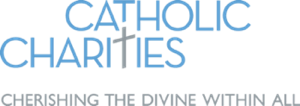Nurse Practitioners Carol Lake and Karen Scheu often finish each other’s sentences. The two bilingual nurse practitioners have been sharing a job at the Esperanza Center since June, 2012, and are very enthusiastic about it. The Esperanza Center Health Services Center has undergone significant changes in the past twelve months since it began the transition to become a Volunteers in Medicine (VIM) free clinic. A generous Improving Access to Care Grant received from the Maryland Community Health Resources Commission (MCHRC) is making a difference in the lives of Latinos in Baltimore who do not have access to healthcare. The Center is now able to provide full-time primary healthcare to our immigrant community in Baltimore City.
Ms. Lake joined the Esperanza Center’s Staff in May, bringing 24 years of clinical nursing experience. Originally from Chile, she is fluent in Spanish and has been serving the Latino community for many years. In fact, everyone in her extended family is involved in volunteering in some way in their own Latino communities. Ms. Lake earned her BS in Nursing from the University of Maryland in Baltimore in 1988 and received her Master’s in Nursing from the Catholic University of America in Washington, D.C. She learned of the job opening at the Center when she called to inquire about volunteering there.
Dr. Scheu earned her Doctor of Nursing Practice from the University of Maryland School of Nursing at Baltimore in June of this year. She also holds a Master’s of Nursing Science from the Columbia School of Nursing, and a Bachelor’s degree in Nursing from Columbia University. Dr. Scheu is a seasoned bilingual Family Nurse Practitioner with more than 13 years of experience. She joined the Esperanza Center’s staff in June after serving as a volunteer in the Health Clinic for three years.
So far in 2012, the Center has cared for 355 patients who could not otherwise access the health care system. All of the patients served by this grant are uninsured and ineligible for Medicaid or Medicare. Notably, of the 355 patients, 66% now have care management plans, a vital part of providing comprehensive healthcare. Nearly a third of the 553 patient visits were urgent care/walk-ins that decreased emergency room utilization, thereby saving city hospitals and taxpayers a considerable amount of money. Moreover, of the 355 patients seen, 169 had chronic conditions, such as hypertension and diabetes. Early detection, treatment, and ongoing care for chronic conditions are keys to improved quality of life and significant savings in healthcare costs.

